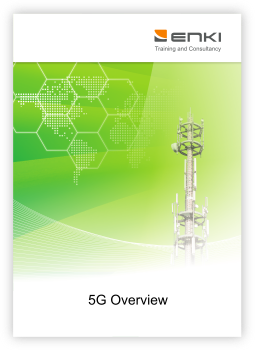ELP 0502 ★★
The course introduces the 5G mobile telecommunications system with its network architecture, protocol architecture, key 5G concepts, new NG-RAN functions and NR interface structure. It also includes an introduction to the Network Functions Virtualisation (NVF) and advantage of 5G in V2X communications.
The course is based on the 3GPP Release 15 version September 2018.
Target audience – Who should attend and benefit
The course is addressed to managerial, technical and not technical staff who require general knowledge on 5G technology and its key features.
Prerequisites – What you are supposed to know prior to the course
The course does not have specific requirements, however general knowledge on LTE is beneficial.
Course content – What you will learn
- 5G introduction
- What is 5G?
- What is new this time?
- 3GPP standardisation roadmap
- 5G system architecture
- Overall network architecture (NG-RAN and 5G CN).
- Functional split between NG-RAN and 5GC
- Nodes (gNB and ng-eNB, AMF, UPF, SMF, PCF, AF, NEF, AUSF, UDM, NSSF, NRF) functions and interfaces
- User identities.
- 5G protocol architecture
- Introduction (protocols, SAP, OSI model)
- NG-RAN protocol layer
- Strata (NAS, AS)
- User plane (SDAP, PDCP, RLC, MAX, PHY)
- Control plane (RRC, SRB, System information)
- QoS (QoS concept, QoS flow, QoS profile, QoS architecture)
- Radio interface structure
- 3GPP TS for 5G
- Key concepts in 5G
- Network slicing
- Multi-access Edge Computing (MEC)
- Local Area Data Network (LADN)
- Quality of Service (QoS concept, QoS flow, QoS profile (5QI, ARP, RQA), QoS architecture).
- Session and Service Continuity (SSC) modes
- 5G RAN
- NR-RAN architecture
- Frequency band
- Bandwidth part
- Carrier Aggregation (CA)
- Supplementary uplink
- Dual connectivity (DC)
- Massive MIMO and beamforming
- C-RAN
- NR physical layer structure
- Numerology
- Time domain structure
- Antenna ports
- Channel mapping (logical channels, transport channels, physical channels and physical signals)
- Network Function Virtualisation (NFV) introduction
- Virtualisation by hypervisors
- NFV objectives
- NFV framework
- NFV use case
- 5G-based V2X
- V2X overview
- 5G advantage for V2X
- V2X network slicing
- V2X evolution
- Mobile network operators role
Duration – How long it takes
2 days (equivalent to 12 hours of lecture).

